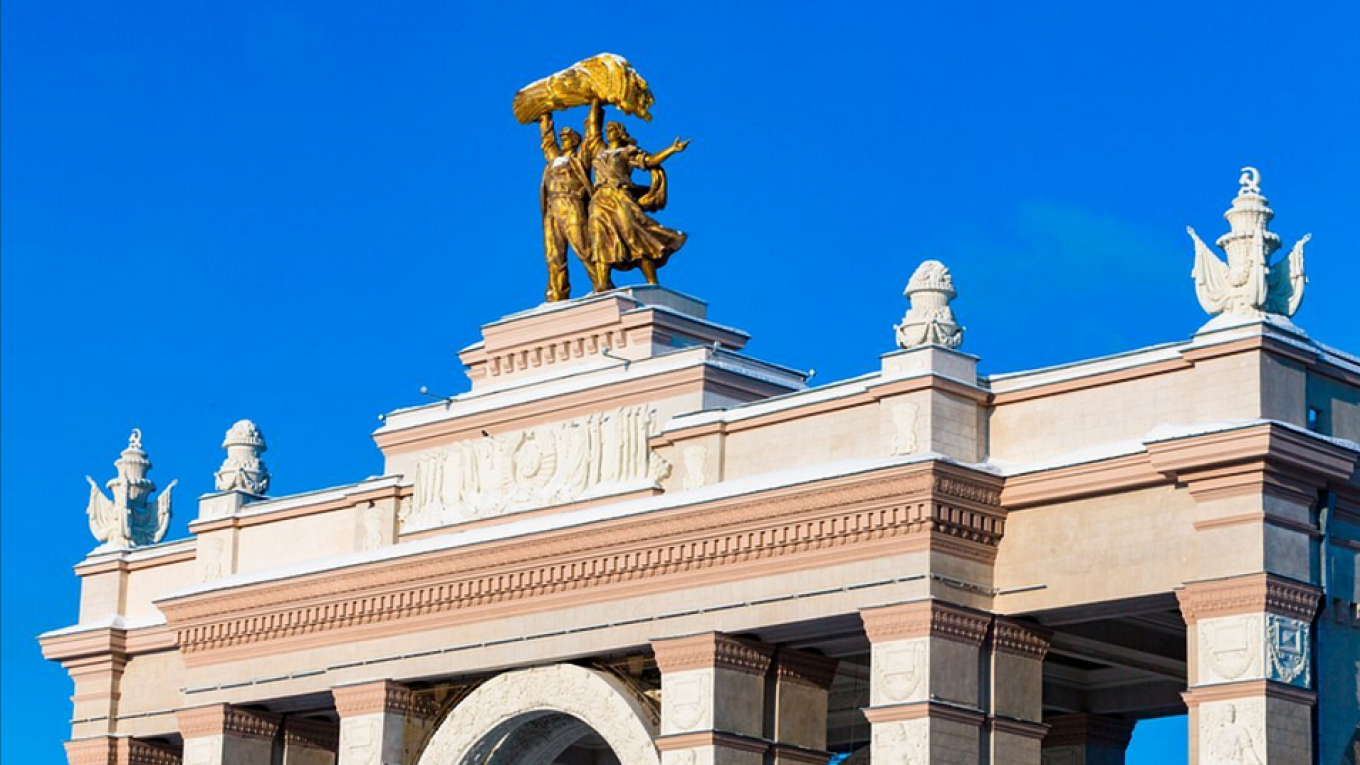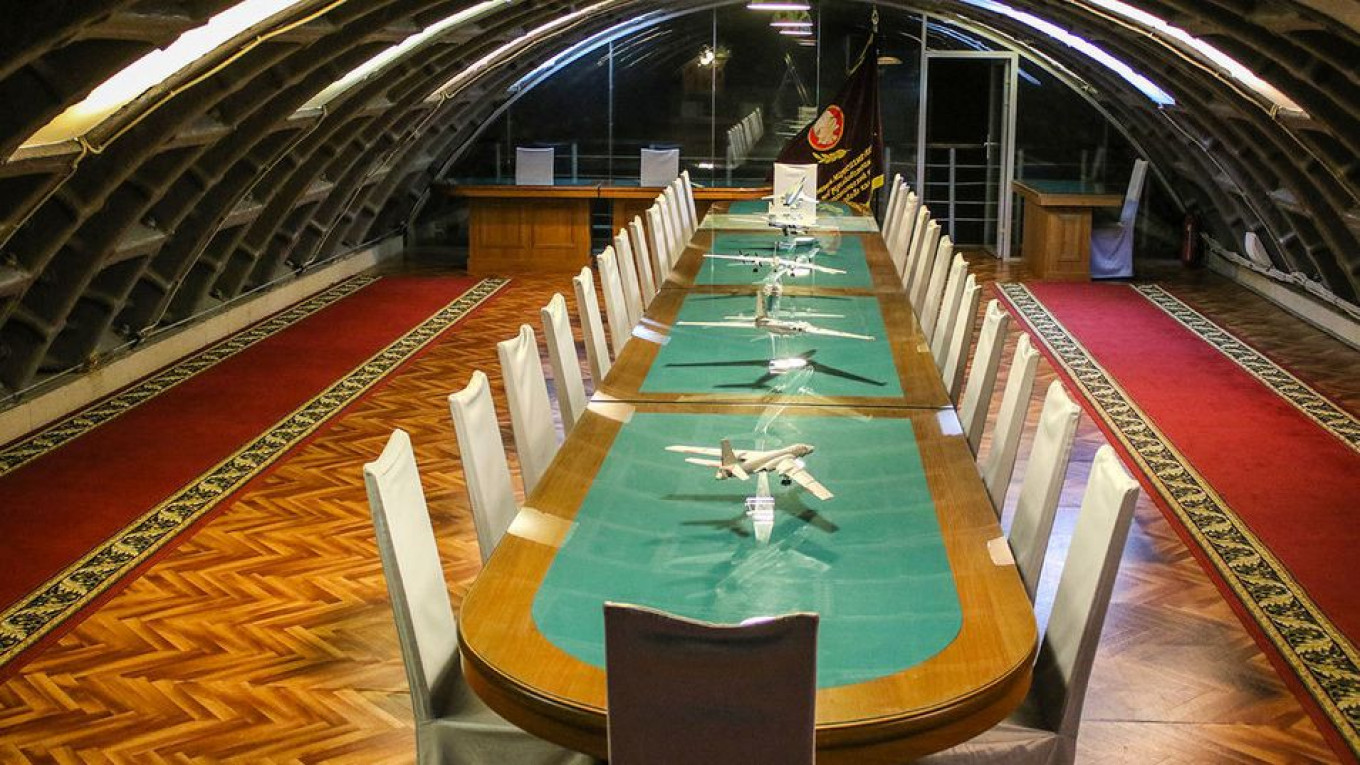Andrey Rublyov Museum of Ancient Russian Culture and Art
If you want to experience something you’ll never see anywhere else in the world, go back to 14th-century Russia at the former Andronikov Monastery, now a museum of ancient Russian culture and art. It is named after Andrei Rublyov, the great icon-painter who worked and worshipped here. It is a small and peaceful cloister, with the oldest stone church in Moscow (1428). The museums have collections of ornamental art, icons, frescoes, stonework and other crafts from the medieval period when Russia had little contact with the rest of the world.
Open: Mon, Tues, Thurs., 2 p.m. to 9 p.m. and Fri, Sat, Sun., 11 a.m. to 6 p.m.
Tickets: from 400 rubles
Andronyevskaya Ploshchad, 10 https://www.rublev-museum.ru/english

Park VDNKH
If you want to go back to the Soviet Union, take a trip to the former Exhibition of Achievements of the State Economy, or simply VDNKh. It began as a show of agricultural successes — think: State Fair only a thousand times bigger — and then became a permanent exhibition, opening in 1939 with hundreds of pavilions and exhibition halls done in the style of the Soviet republics. After the war it was expanded and remodeled and now included the famous fountains: The Friendship of Nations fountain with golden dancing girls from each of the Soviet republics, and the Stone Flower fountain, with its magnificent floral sprays. In recent years the older pavilions have been cleaned up and it is filled with exhibitions of art, aeronautics, history, and technology. Rent a bike, sit by a pond, play paint-ball, get a bite to eat (from kebabs to pho), watch some whales, or enjoy a concert. Be sure to see the grand Collective Farm Girl and Worker statue created by Vera Mukhina for the Paris World Fair in 1939, and check out the museum in the base.
Open: Territory open 24/7, most pavilions 10 a.m to 9 p.m.
Tickets: free admission
Prospekt Mira, 119 https://www.vdnh.ru/en

Bunker 42
Remember the Cold War? Bunkers far underground, fitted out with everything the leaders needed to survive a nuclear attack? Now you can experience the claustrophobic excitement twelve stories underground at Bunker 42. You’ll need to call to arrange a tour in advance, they don’t allow visitors to wander through the dark on their own (we’re not sure you’d want to). They offer two different tours in English. The tours show you the subterranean tunnels designed for the Soviet leaders and even simulate a nuclear bomb strike, just for the thrill of it. Oddly fascinating.
Open: daily 10 a.m. to 9 p.m. Daily tours in English at 1:30 p.m. and 6:30 p.m.
Tickets: from 1900 rubles
5th Kotelnichesky Pereulok, 11 https://www.bunker42.com/eng

River Cruises
If you can’t decide what to see, hop on one of the dozens of river cruise ships and see the city and sites in style, with no traffic jams, stop-and-go, or honking horns. If you decide on a whim, just head to the river bank near Kievsky train station, in front of the Ukraine Radisson Blue Hotel, and buy a ticket for the next ship leaving. There are a number of cruise companies; most round-trip cruises take two hours, although you can also use the ships as taxis and get off downstream. There are snacks and drinks available on board. Radisson has their own fleet and offers catered cruises that are English-friendly. Whatever ship you take, this is the best way to see ancient, old, Soviet, and post-Soviet Moscow — and it’s spectacular at night, perfect for a romantic outing. You’ll get some seriously impressive snaps of the city to show off to your friends back home and it’s a great way to get to grips with the sprawling and often confusing megalopolis. Don’t forget to bring a sweater, even with the intense summer heat, it gets chilly on the water.
Taras Shevchenko Naberezhnaya (Embankment)

Gorky Museum
Moscow’s finest pre-revolutionary architect of what Russians call style moderne (the Russian version of Art Nouveau) was Fyodor Shekhtel, and Shekhtel’s finest creation was the mansion and furnishings he built for the banker Ryabushkinsky. You’ll recognize the house immediately by the fanciful wrought iron fence and decorative frieze under the eaves. Inside there are magnificent stained glass windows, curved wooden doors with swirled bronze handles, and a breathtaking stone staircase that curves down to the first floor like waves frozen on the shore, with lamps that look like elegant jellyfish. After the 1917 Revolution it was home to the writer Maxim Gorky, whose modest possessions and books are on display.
Open: Wed. to Sun. 11 a.m. to 5:30 p.m.
Tickets: from 400 rubles
Malaya Nikitskaya Ulitsa, 6/2 https://www.afisha.ru/msk/museum/7386
A Message from The Moscow Times:
Dear readers,
We are facing unprecedented challenges. Russia's Prosecutor General's Office has designated The Moscow Times as an "undesirable" organization, criminalizing our work and putting our staff at risk of prosecution. This follows our earlier unjust labeling as a "foreign agent."
These actions are direct attempts to silence independent journalism in Russia. The authorities claim our work "discredits the decisions of the Russian leadership." We see things differently: we strive to provide accurate, unbiased reporting on Russia.
We, the journalists of The Moscow Times, refuse to be silenced. But to continue our work, we need your help.
Your support, no matter how small, makes a world of difference. If you can, please support us monthly starting from just $2. It's quick to set up, and every contribution makes a significant impact.
By supporting The Moscow Times, you're defending open, independent journalism in the face of repression. Thank you for standing with us.
Remind me later.






